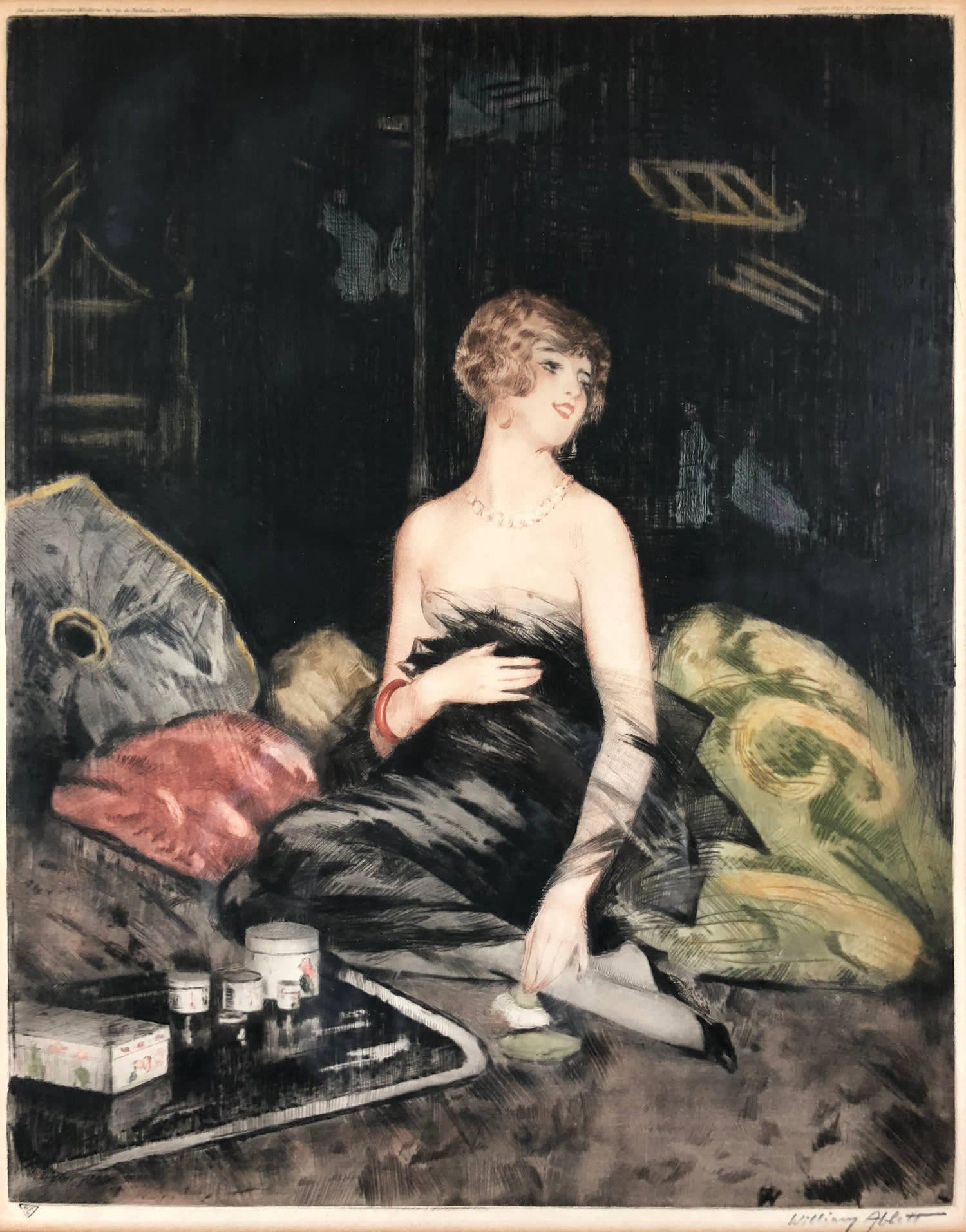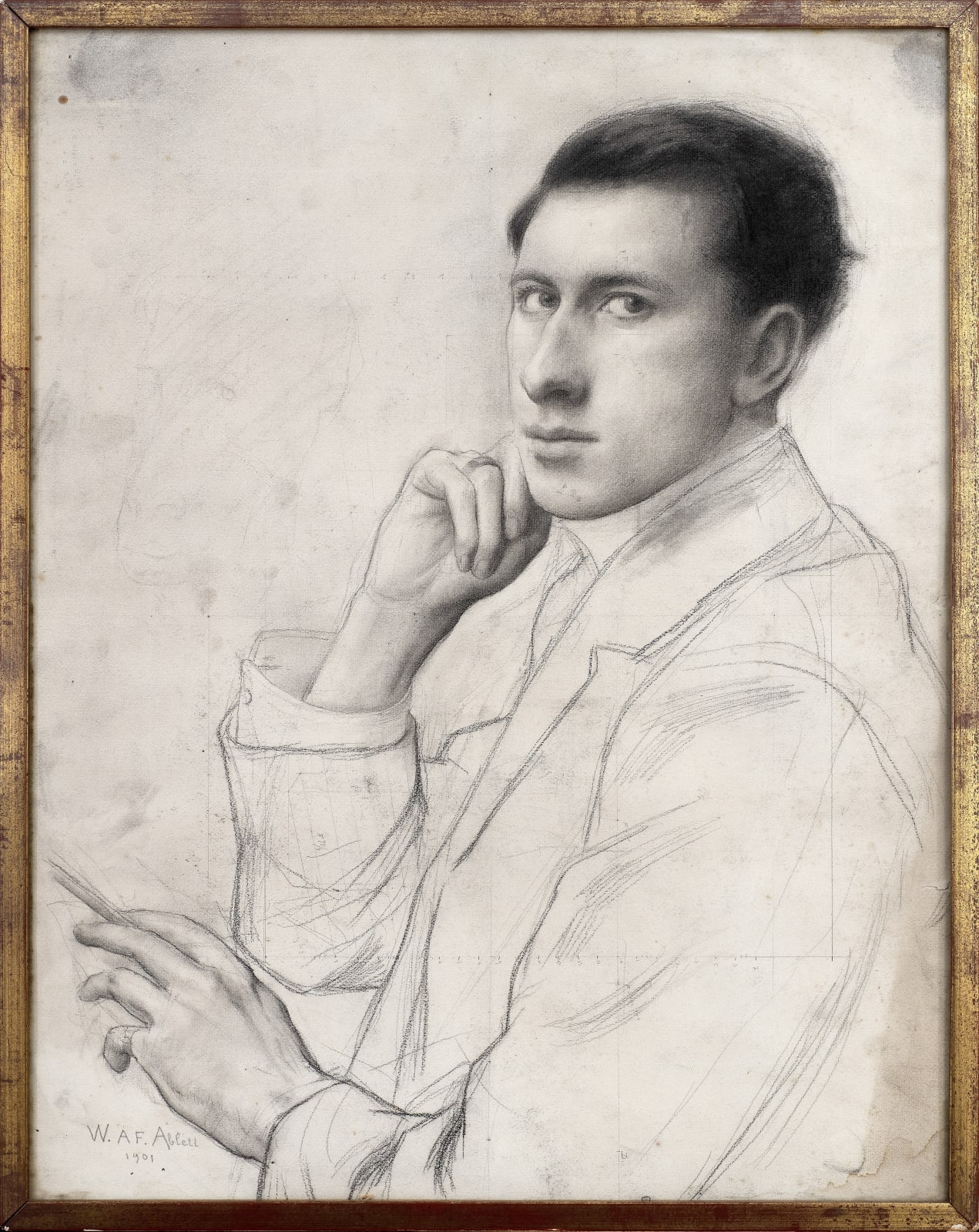William Ablett (1877 - 1925)
With his right hand casually propping up his chin and his left hand lightly holding the pencil with which he depicts himself, William Ablett looks out at the viewer with insouciance. Ablett’s skill as a draughtsman is evident throughout, building
With his right hand casually propping up his chin and his left hand lightly holding the pencil with which he depicts himself, William Ablett looks out at the viewer with insouciance. Ablett’s skill as a draughtsman is evident throughout, building up the form of his jacket with a sparing use of the pencil, whereas the volume of the hands and head are created with dextrous shading. Indeed only the year prior Ablett had won the second prize for the drawn figure at the Salon, though on the basis of this refined self-portrait he was perhaps unlucky not to have carried away the first prize. Either way, his graphic skills had been officially recognised in the most important artistic forum of the time.
Though born to British parents, Ablett spent his whole life in France, entering the École des Beaux-Arts in 1897, where he studied under Jean-Léon Gérôme and Albert Aublet, with the latter becoming a life-long friend. Exhibiting regularly at the Salon throughout his life, the artist was made a chevalier de la Légion d’honneur in 1930, and was also elected to the British Royal Academy. He was fatally injured in an automobile accident in the Bois de Boulogne in 1936, prematurely ending a successful career.

Fig. 1, William Ablett, In the boudoir, c. 1920, acquatint engraving,
19 x 15.5 cm, Private Collection
Today Ablett is best known for his lithographs depicting fashionable Art Deco females (fig. 1) which were extremely popular at the time but which may be considered somewhat gauche by today’s standards. Though remaining outside of the avant-garde, it is his interior scenes of daily life and his elegantly stylish portraits which best accord with modern sensibilities. These latter are reminiscent of, though in no way inferior to, Ablett’s almost exact contemporary Bernard Boutet de Monvel (fig. 2).

Fig. 2, Bernard Boutet de Movel, Portrait of a young man, pencil on
paper, Location unknown



